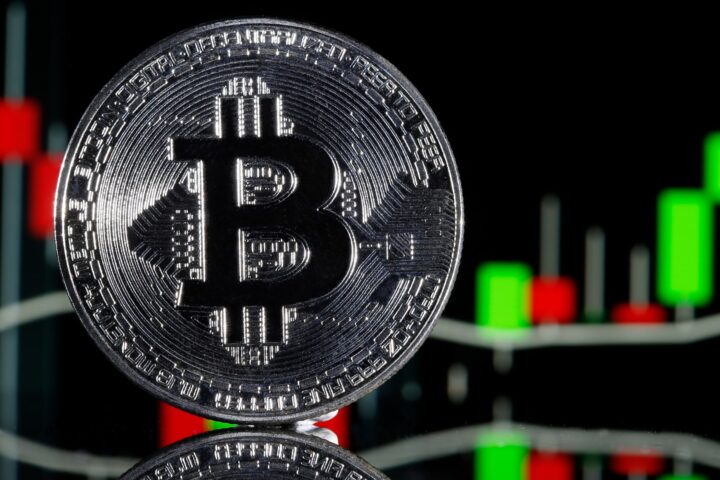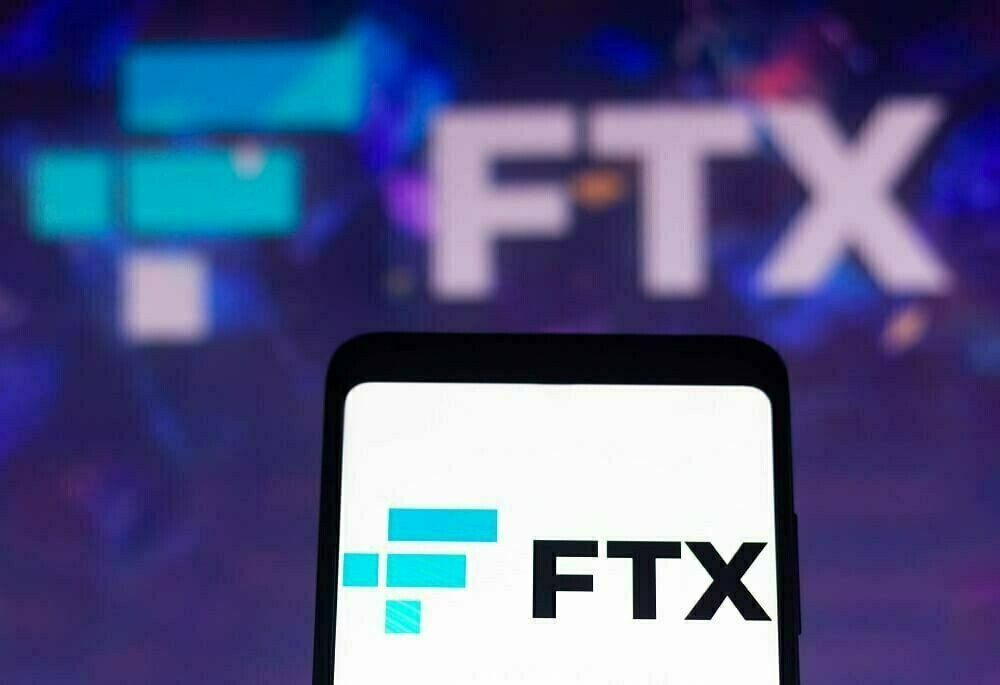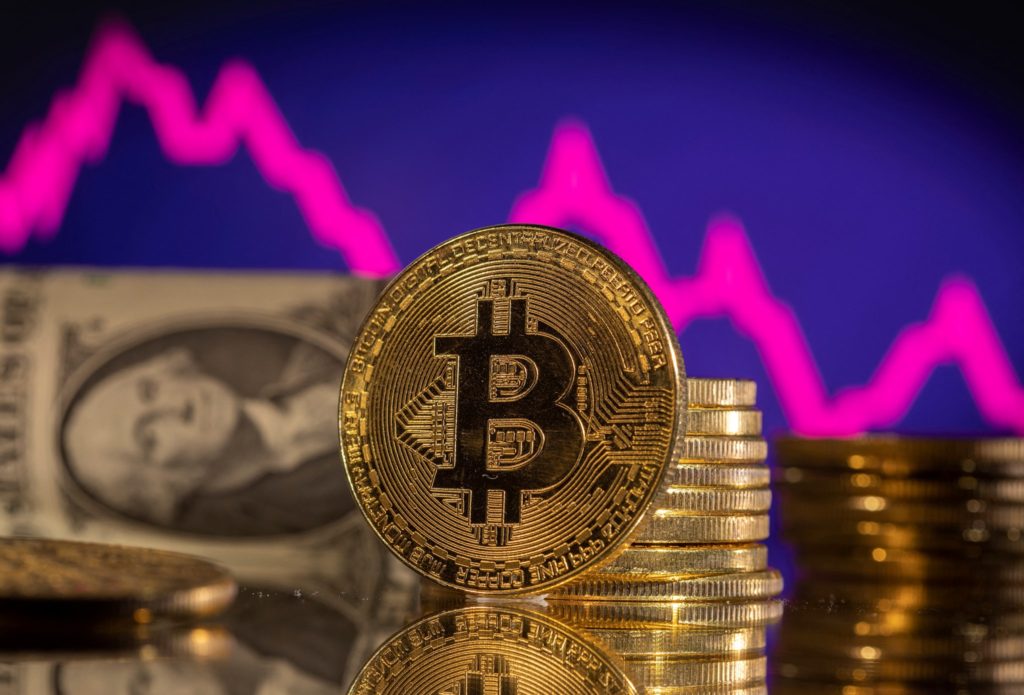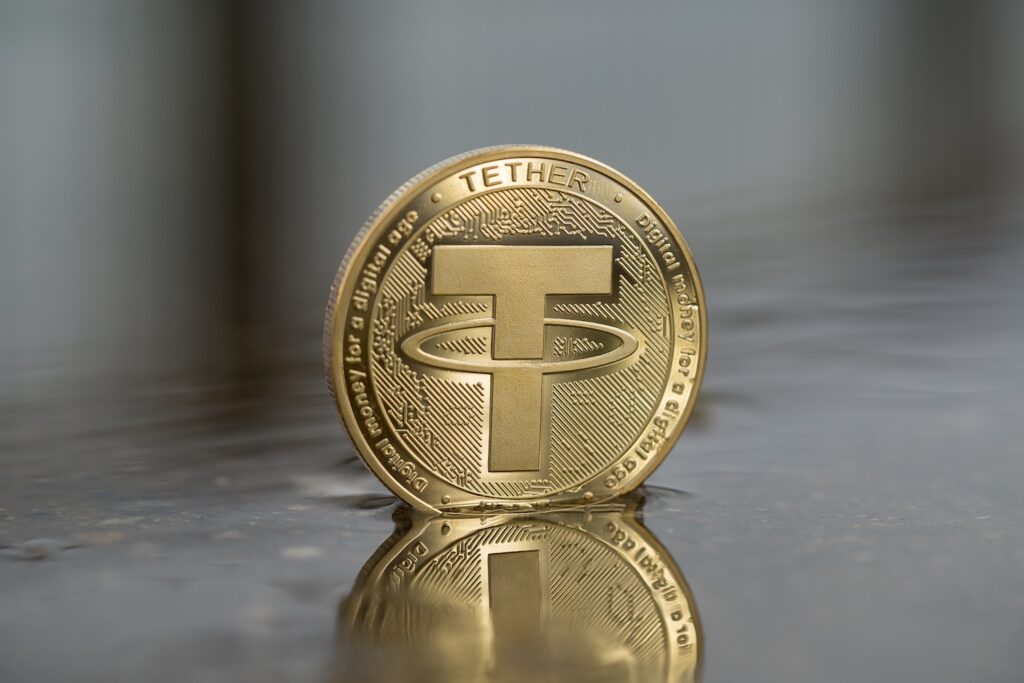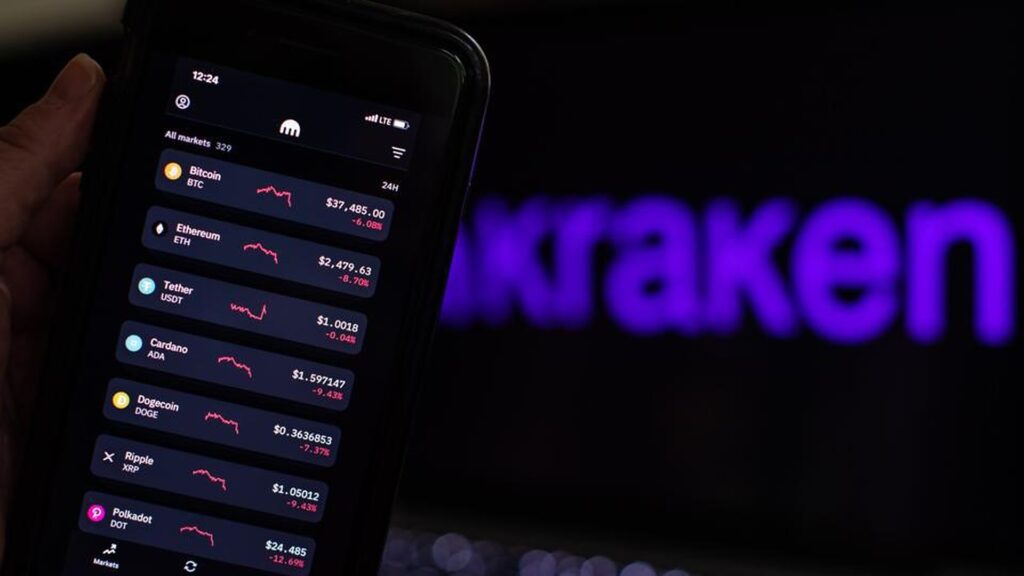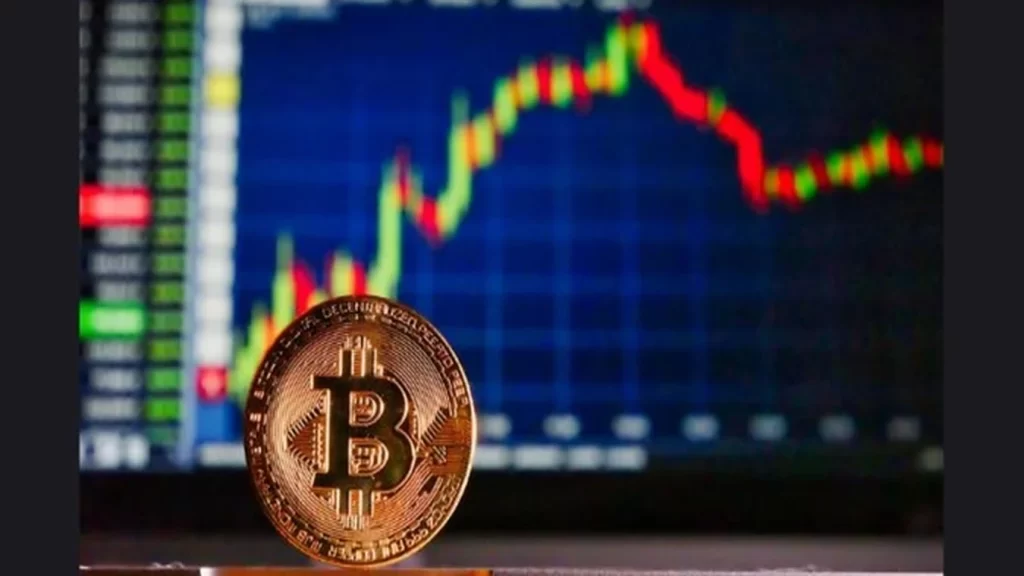The European Parliamentary Research Service (EPRS) has emphasized the critical importance of enhanced oversight from non-European Union (EU) regulators in order to foster greater stability and growth within the global cryptocurrency market.
With the Markets in Crypto-Assets Regulation (MiCA) Act on track for implementation by December 2024, a recent EPRS report underscores the necessity of establishing a more robust regulatory framework in non-EU jurisdictions.
The report underlines that the EU’s financial system and autonomy remain vulnerable to policy actions taken by non-EU countries, particularly in areas where MiCA is applicable.
The report raises significant concerns regarding potential repercussions on financial stability, the diminished attractiveness of the crypto market, and the mainstream adoption of stablecoins. These concerns underscore the urgency of addressing regulatory disparities on a global scale.
One of the key observations made in the report pertains to the United States, where a fragmented regulatory landscape prevails.
The presence of various state-level and federal stakeholders creates a complex web of regulations, indirectly impacting legal clarity and regulatory certainty within the crypto industry.
This fragmentation has the potential to hinder the growth and development of the sector.
The report also sheds light on the United Kingdom’s Financial Services and Markets Act, which, according to a study conducted for the European Parliament, is anticipated to diverge significantly from EU regulations concerning crypto-assets in the coming years.
READ MORE: Bybit Unveils Automated Risk Management Tool ‘Perp Protect’
This divergence could introduce additional challenges for market participants operating in both the UK and the EU.
Highlighting the global scope of regulatory adaptation, the Malta Financial Services Authority (MFSA) initiated a public consultation on September 18th to align its crypto regulations with the forthcoming MiCA regulations.
The proposed revisions aim to harmonize rules governing exchanges, custodians, and portfolio managers with the EU’s MiCA regulations, reflecting the evolving international regulatory landscape.
In conclusion, the EPRS report underscores the critical need for international collaboration and alignment in cryptocurrency regulation.
As the EU moves forward with MiCA implementation, it becomes increasingly vital for non-EU jurisdictions to adopt compatible regulatory frameworks to ensure a stable, secure, and globally accessible cryptocurrency market.
The report serves as a timely reminder of the interconnected nature of the crypto industry and the importance of consistent regulatory standards to support its continued growth and maturation.
Other Stories:
SEC Faces Setback as Judge Denies Immediate Access to Binance.US Software
US House Financial Services Committee Advances Bills to Regulate Central Bank Digital Currency
Binance.US Faces Record-Low Trading Activity Amid Mounting Regulatory and Internal Challenges
The market for bankruptcy claims has displayed a robust appetite for the debts of the defunct cryptocurrency exchange, FTX, with major credit investors rushing to acquire FTX debts.
As reported by Bloomberg on September 21, 2023, investors such as Silver Point Capital, Diameter Capital Partners, and Attestor Capital have collectively purchased over $250 million worth of FTX debts this year, based on an in-house analysis of public court filings.
Notably, FTX’s debt has attracted interest from investors like Hudson Bay Capital Management, which acquired a $23 million FTX claim and subsequently sold approximately 50% of it to Diameter.
This growing demand has led to a surge in the prices of some FTX claims throughout the year. Certain lower-ranking FTX claims have seen a remarkable 191% increase, climbing from $0.12 in early 2023 to approximately $0.35 in recent weeks, according to data from the crypto debt broker Claims Market.
The historical indicative prices of “bid” and “ask” for larger FTX claims have also experienced an upward trend this year, as reported by Claims Market’s charts.
Investors are accumulating FTX claims with the expectation that the firm’s bankruptcy proceedings will unlock additional value when resolved.
However, it’s worth noting that major bankruptcies can take years to unravel, making it challenging to assess the final worth of a collapsed company, especially in the volatile world of cryptocurrency.
Some bankruptcy claim investors believe that the total value of all traded FTX claims may exceed the $250 million reported in public court records.
READ MORE: SEC Faces Setback as Judge Denies Immediate Access to Binance.US Software
Thomas Braziel, a bankruptcy claims investor, suggested that buyers and sellers often delay filing paperwork for debt trades.
He mentioned being aware of individual FTX claims surpassing $100 million, likening FTX to historical financial collapses like Lehman and Madoff.
In addition to debt claims, many investors are acquiring the rights to FTX crypto accounts that still hold assets trapped on the platform since FTX suspended withdrawals in November 2022.
Debt investment firm Contrarian Capital Management, for instance, acquired an FTX account containing a substantial amount of Bitcoin and Ether, alongside $430,000 in cash.
The phenomenon of protracted crypto bankruptcies is not unique to FTX; for instance, Mt. Gox, a major crypto exchange hacked in 2014, has once again extended the deadline for returning Bitcoin holdings to investors by another year. At the time of writing,
Bitcoin’s value has surged over 3,000% since the Mt. Gox hack, underlining the long-lasting repercussions of such incidents.
The backdrop of these developments is FTX’s ongoing restructuring efforts, with executives urging investors to complete the claims process via the FTX Customer Claims Portal by the September 29, 2023 deadline.
Other Stories:
Binance.US Faces Record-Low Trading Activity Amid Mounting Regulatory and Internal Challenges
US House Financial Services Committee Advances Bills to Regulate Central Bank Digital Currency
Brian Armstrong, the CEO of the cryptocurrency exchange giant Coinbase, recently took to the social media platform X (formerly Twitter) to voice his stance on the regulation of artificial intelligence (AI).
In his statement on September 23, Armstrong firmly asserted his belief that AI should remain unregulated. He argued that the rapid development of AI is crucial, citing reasons such as national security as driving forces behind this need for swift progress.
Additionally, Armstrong cautioned against the unintended consequences that often accompany regulatory efforts, emphasizing that excessive regulation can stifle innovation and hamper healthy competition.
Drawing parallels to the evolution of the internet, Armstrong reminisced about a “golden age of innovation” in the digital realm when minimal regulation fostered boundless creativity and progress.
He contends that AI technology should follow a similar trajectory, remaining largely unencumbered by strict regulatory frameworks.
As an alternative approach to safeguarding the AI space, Armstrong proposed a decentralized and open-source model.
He suggested “letting the cat out of the bag,” implying that a more open and collaborative environment would be better suited to nurture AI’s growth and potential.
In contrast to Armstrong’s perspective, several jurisdictions worldwide have initiated efforts to regulate AI or voiced concerns regarding its potential impact.
China, for instance, implemented provisional guidelines for the management of AI activities on August 15.
READ MORE: Creators Embrace Decentralized Platforms as Web3 Reshapes Adult Content Industry
These regulations emerged as a joint initiative involving six of the country’s government agencies, marking a significant step in regulating AI amid the industry’s rapid expansion.
Meanwhile, in the United Kingdom, the Competition and Markets Authority conducted an in-depth study on the implications of AI for competition and consumers.
Released on September 18, their findings indicated that AI has the potential to bring profound changes to both work and daily life.
However, the pace of these changes raised concerns about their potential impact on competition in various sectors.
In conclusion, Brian Armstrong’s stance on AI regulation reflects his strong belief in maintaining a regulatory environment that allows AI technology to flourish without unnecessary constraints.
This perspective stands in contrast to the actions of other jurisdictions, such as China and the United Kingdom, which are actively exploring regulatory measures to address the challenges posed by the rapid advancement of artificial intelligence.
Other Stories:
Bitcoin Holds Steady at $27,000 as Crypto Community Awaits Fed’s Decision
South Korea’s Cryptocurrency Holdings Surpass $98 Million, Dominating Overseas Assets
ASIC Launches Legal Action Against Kraken’s Australian Operator Bit Trade
On September 21st, the defunct cryptocurrency exchange FTX initiated legal action against former employees affiliated with the Hong Kong-incorporated entity Salameda, which was once part of the FTX group.
According to court documents, FTX has launched this lawsuit with the aim of reclaiming $157.3 million, alleging that this substantial sum was fraudulently withdrawn just hours before the exchange filed for bankruptcy.
The court filing specifically names Michael Burgess, Matthew Burgess, their mother Lesley Burgess, along with Kevin Nguyen and Darren Wong, in addition to two other corporate entities.
These individuals and entities are alleged to have held ownership of companies with registered accounts on FTX.com and FTX US.
The lawsuit contends that they withdrew funds during the “preference period,” a critical juncture preceding FTX’s bankruptcy declaration.
The court documents assert that these transfers to Defendant Michael Burgess were executed with the intent to obstruct, delay, or defraud the present or future creditors of FTX US.
Notably, these transactions occurred mere hours before FTX suspended all non-fiat user withdrawals on November 8, 2022.
READ MORE: Bybit Unveils Automated Risk Management Tool ‘Perp Protect’
The lawsuit further alleges that Matthew Burgess applied pressure on FTX employees to expedite specific pending withdrawal requests from one of Michael Burgess’s FTX US exchange accounts, while misleadingly representing the account as his own.
This assertion is substantiated with messages exchanged on the communication platform Slack.
In a parallel development, the former CEO of FTX, Sam Bankman-Fried (SBF), currently finds himself incarcerated and awaiting the commencement of his two-part trial.
The first phase is slated to begin on October 3, 2023, with the second following in March 2024.
SBF had sought early release from detention, citing difficulties in adequately preparing for his trial while in jail and alleging that it infringed upon his First Amendment rights under the United States Constitution.
However, on September 21st, the judiciary ruled against granting him early release.
Furthermore, on the same day, Judge Lewis Kaplan upheld a Department of Justice motion, barring the testimony of SBF’s key witnesses.
This legal landscape underscores the complexity and high-stakes nature of the ongoing legal proceedings surrounding FTX and its former executives.
Other Stories:
SEC Faces Setback as Judge Denies Immediate Access to Binance.US Software
US House Financial Services Committee Advances Bills to Regulate Central Bank Digital Currency
Binance.US Faces Record-Low Trading Activity Amid Mounting Regulatory and Internal Challenges
Binance CEO Changpeng “CZ” Zhao and the cryptocurrency exchange he leads have jointly filed a motion to dismiss the lawsuit filed against them by the United States Securities and Exchange Commission (SEC).
This legal development unfolded in the United States District Court for the District of Columbia, with both Binance Holdings and Zhao asserting that the SEC had exceeded its jurisdiction in their lawsuit.
In a detailed 60-page petition, the legal representatives for Binance and Zhao contended that the SEC’s actions were problematic due to a lack of clear regulatory guidance within the crypto industry prior to the lawsuit.
They accused the SEC of attempting to retroactively assert its regulatory authority over cryptocurrency transactions, dating back as far as July 2017 when the SEC had yet to provide any public guidance on cryptocurrencies.
The petition stated, “The SEC pursues these novel theories retroactively, seeking to impose liability for sales of crypto assets that occurred as far back as July 2017, before the SEC provided any public guidance concerning cryptocurrency.
“It is clear that the SEC’s lawsuit has no foundation in the currently enacted securities laws.”
READ MORE: Binance.US Faces Record-Low Trading Activity Amid Mounting Regulatory and Internal Challenges
Furthermore, Binance’s legal team argued that the SEC had misinterpreted securities laws and their applicability to crypto assets, contending that the regulator distorted the text of these laws in its pursuit of regulatory control over the crypto industry.
Notably, Binance’s American counterpart, Binance.US (legally known as BAM Trading Services), also took a similar stance by filing a separate 56-page petition on the same day, seeking the dismissal of charges.
The SEC initially filed the lawsuit against Binance and its affiliates on June 5, alleging that Binance offered the sale of unregistered securities and conducted unlawful operations within the United States.
This legal action followed a similar move by the Commodity Futures Trading Commission (CFTC), which sued Binance three months prior for failing to register and violating its regulatory guidelines.
The ongoing regulatory scrutiny has significantly impacted Binance.US, with daily trading volumes plummeting by over 98% since September 2022.
The exchange also announced layoffs amounting to 30% of its workforce on September 13, with its president and CEO, Brian Shroder, departing from the company amidst these challenges.
Other Stories:
Bybit Unveils Automated Risk Management Tool ‘Perp Protect’
SEC Faces Setback as Judge Denies Immediate Access to Binance.US Software
US House Financial Services Committee Advances Bills to Regulate Central Bank Digital Currency
A recent publication from the Institute of Risk Management (IRM) has drawn attention to the potential of Bitcoin (BTC) to serve as a catalyst for a worldwide energy transition.
The report, authored by members of the IRM Energy and Renewables Group, Dylan Campbell and Alexander Larsen, bears the title “Bitcoin and the Energy Transition: From Risk to Opportunity.”
This comprehensive analysis challenges the prevailing notion that BTC poses a threat due to its energy-intensive nature and instead sheds light on its capacity to instigate transformative changes in the global energy landscape.
The IRM report underscores the indispensable role of energy in contemporary society and the growing demand for sustainable, cost-effective, and clean energy sources.
Notwithstanding the criticisms regarding Bitcoin’s substantial energy consumption, the study offers a more nuanced perspective by elucidating the potential advantages BTC could bring to the energy sector.
One of the most noteworthy findings within the report is the assertion that Bitcoin mining has the potential to reduce global emissions by as much as 8% by 2030.
This ambitious target can be achieved through the conversion of wasted methane emissions into less harmful byproducts.
The report elucidates a theoretical scenario in which captured methane is harnessed to power Bitcoin mining operations, effectively mitigating the release of methane into the atmosphere.
READ MORE:Bybit Unveils Automated Risk Management Tool ‘Perp Protect’
Furthermore, the report outlines additional opportunities for Bitcoin to make meaningful contributions to the energy sector.
It suggests that Bitcoin could enhance energy efficiency by facilitating electricity grid management through the deployment of Bitcoin miners and the transfer of excess heat generated by mining operations to greenhouses, thus optimizing resource utilization.
The authors of the IRM report articulate their perspective succinctly: “We have shown that while Bitcoin is a consumer of electricity, this does not translate to it being a high emitter of carbon dioxide and other atmospheric pollutants.
Bitcoin can be the catalyst to a cleaner, more energy-abundant future for all.” In essence, the report underscores the potential of BTC not only to coexist with the imperative for a sustainable energy future but also to actively drive positive change within the energy sector.
In conclusion, the IRM’s report challenges the prevailing narrative surrounding Bitcoin’s environmental impact, positing that BTC has the potential to be a constructive force in shaping a cleaner, more energy-rich global future.
Other Stories:
Binance.US Faces Record-Low Trading Activity Amid Mounting Regulatory and Internal Challenges
US House Financial Services Committee Advances Bills to Regulate Central Bank Digital Currency
SEC Faces Setback as Judge Denies Immediate Access to Binance.US Software
Tether, the leading issuer of stablecoins in the cryptocurrency market, has experienced a surge in stablecoin lending activity during 2023, despite having previously declared its intention to phase out such loans entirely by December 2022.
In its most recent quarterly report, Tether disclosed that its assets included a total of $5.5 billion in loans as of June 30, marking an increase from the $5.3 billion reported in the previous quarter.
A spokesperson from Tether explained to The Wall Street Journal (WSJ) that this upturn in stablecoin lending was primarily driven by a few short-term loan requests originating from clients with whom the company had established long-standing relationships.
It was emphasized that Tether remains committed to reducing these loans to zero by 2024, as initially announced.
Stablecoin loans had previously gained popularity as a lending product offered by Tether, permitting customers to borrow USDT while providing collateral in return.
Nevertheless, these secured loans had often been surrounded by controversy due to a lack of transparency concerning both the collateral and the borrowers.
The WSJ’s report in December 2022 had raised substantial concerns regarding these lending products, asserting that they were not fully collateralized.
Doubts were also cast on Tether’s ability to meet redemption requirements during times of market instability.
Tether addressed these controversies during 2022, prior to announcing its plan to phase out secured loans in 2023.
At the time, the stablecoin issuer dismissed concerns surrounding these loans as “FUD” (Fear, Uncertainty, Doubt) and insisted that they were overcollateralized.
The recent resurgence in secured loans for Tether coincides with the firm’s expanding market dominance and profitability.
Tether reported a surplus reserve of $3.3 billion in September, a notable increase from the $250 million figure reported in 2022.
Despite reaching out to Tether for comment, Cointelegraph has not yet received a response.
Nonetheless, Tether did issue a response to the WSJ article, asserting that the publication’s concerns regarding stablecoin loans were unwarranted.
Tether emphasized that as a company boasting $3.3 billion in excess equity and projecting an annual profit of $4 billion, it was effectively offsetting the secured loans and retaining such profits within its corporate balance sheet.
Tether remained steadfast in its commitment to eventually eliminate secured loans from its reserves.
Other Stories:
3LAU’s Exit Sparks Debate Over Regulatory Risks on Decentralized Social Platform
Secure Your Crypto Wallet Against Scams With These Essential Tools
Demystifying the Crypto Tax Headache: A Guide to Navigating Tax Obligations
Adult content creators are increasingly turning to decentralized alternatives like Only1 and Friend.tech as they grapple with payment challenges and the constant fear of deplatforming.
Leon Lee, the founder and CEO of Only1, a decentralized counterpart to OnlyFans, sees a significant shift of power from intermediaries to content creators, thanks to Web3 technology.
He notes that intermediaries are diminishing in significance while creators’ roles and earnings are on the rise.
Patreon faced issues in August when creators encountered difficulties withdrawing their earnings due to payment flagging by banks. Moreover, the memory of OnlyFans’ attempt to ban sexually explicit content in 2021 still lingers.
Lee argues that as long as creators remain on centralized platforms with traditional payment systems, they remain susceptible to deplatforming and are unable to realize their full earning potential.
Only1, launched on the Solana blockchain in March 2023 with backing from Animoca Brands, is just one example of startups seeking to reinvent adult subscription platforms with a crypto twist.
In 2022, Allie Rae introduced WetSpace, a crypto-powered adult content platform, to provide an alternative to OnlyFans.
Rae identified banks as a driving force behind platform decisions and saw crypto as a solution to circumvent their influence.
READ MORE: Secure Your Crypto Wallet Against Scams With These Essential Tools
More recently, creators began migrating to Friend.tech, a new decentralized social media platform on Coinbase’s layer-2 network Base.
Lee predicts a mass migration as creators reject censorship rules imposed by centralized intermediaries. While TV producers, advertisers, and brands will maintain a presence in the creator economy, blockchain-based peer-to-peer payment systems offer a logical progression for creators.
By eliminating the reliance on traditional payment processors, Web3 platforms empower communities to exercise full autonomy over the types of content allowed.
Lee emphasizes that since the OnlyFans adult content censorship debacle, creators have been establishing “backup accounts” on various platforms due to deplatforming risks.
In the Web3 space, Proof of Peach, SEXN, and Keyhole are among the adult entertainment platforms joining the decentralized movement.
Lee envisions a future where creators gravitate toward platforms that provide complete autonomy over their content and ownership rights to their earnings.
He believes this shift away from intermediaries is the natural progression facilitated by blockchain technology, enabling an inevitable future where there are no intermediaries between creators and their fans.
Other Stories:
3LAU’s Exit Sparks Debate Over Regulatory Risks on Decentralized Social Platform
Demystifying the Crypto Tax Headache: A Guide to Navigating Tax Obligations
Bit Trade, the provider of the Kraken cryptocurrency exchange in Australia, is facing legal action from the Australian Securities and Investments Commission (ASIC) for allegedly failing to meet design and distribution obligations for one of its trading products.
ASIC, in a statement released on September 21, asserted that Bit Trade did not establish a target market determination before making its margin trading product available to Australian customers.
Design and distribution obligations are mandatory requirements imposed on financial product providers in Australia.
These obligations entail designing financial products that align with the predefined needs of customers and distributing them through a targeted strategy.
ASIC claimed that since the introduction of these obligations in October 2021, over 1,160 Australian customers utilized Bit Trade’s margin trading product, resulting in a collective loss of approximately $8.35 million (12.95 million Australian dollars).
The regulator communicated Bit Trade’s non-compliance with these obligations to the company in June 2022.
Despite this warning, ASIC alleges that Bit Trade continued to offer the product without fulfilling the necessary determinations.
Jonathon Miller, the managing director of Kraken’s Australian operations, expressed surprise at ASIC’s actions, believing the product to be in compliance with local regulations.
READ MORE: Secure Your Crypto Wallet Against Scams With These Essential Tools
Miller emphasized that they had been actively trying to engage with ASIC to ensure their product offering remained compliant.
Bit Trade’s margin trading product provides customers with a “margin extension” service, enabling them to access credit up to five times the value of their collateralized assets.
ASIC, however, contends that this product qualifies as a “credit facility,” as it extends credit for purchasing and selling specific cryptocurrencies on the Kraken exchange.
Sarah Court, ASIC’s deputy chair, stressed that these legal proceedings serve as a reminder to the cryptocurrency industry that regulators will continue to scrutinize financial products to ensure compliance with consumer protection laws in Australia.
“ASIC’s action should be a reminder of the importance of adhering to design and distribution obligations to ensure appropriate distribution of financial products to consumers,” Court stated.
In summary, ASIC has initiated civil proceedings against Bit Trade, the operator of Kraken in Australia, accusing the company of failing to meet design and distribution obligations related to one of its trading products.
The regulator alleges that Bit Trade did not establish a target market determination and continued to offer the product despite being notified of non-compliance.
Bit Trade contends that its product complies with Australian law, while ASIC emphasizes the importance of compliance with consumer protection laws in the cryptocurrency industry.
Other Stories:
3LAU’s Exit Sparks Debate Over Regulatory Risks on Decentralized Social Platform
Demystifying the Crypto Tax Headache: A Guide to Navigating Tax Obligations
Cryptocurrencies, primarily Bitcoin, have emerged as a dominant component of South Korea’s overseas assets, according to the latest report released by the country’s National Tax Service (NTS).
In an official announcement made on September 20, the NTS disclosed that a total of 1,432 individuals and corporations had reported overseas accounts denominated in cryptocurrencies during the current year.
The cumulative value of these reported cryptocurrency holdings amounted to a staggering 130.8 trillion South Korean won, which equates to approximately $98 million.
This remarkable figure represents more than 70% of the overall reported value of all overseas assets.
The official data revealed that a total of 5,419 entities had filed reports regarding their offshore financial accounts, encompassing a diverse range of assets, such as cryptocurrencies, stocks, deposits, and savings.
The aggregate worth of these assets was measured at 186.4 trillion won, or around $140 million.
Although cryptocurrencies were the single largest category in terms of the value of assets reported, deposits and savings accounts were predominant in terms of the number of reports filed.
A total of 2,952 individuals and companies reported holdings worth 22.9 trillion won, equivalent to $17 million.
Additionally, another 1,590 entities disclosed the possession of stocks valued at 23.4 trillion won, or approximately $17.6 million.
READ MORE: Dubai-Based Cryptocurrency Exchange Faces Liquidity Crisis Amid Regulatory Scrutiny
To ensure compliance with tax regulations, the NTS has outlined its intention to intensively scrutinize individuals and entities that fail to report their overseas financial accounts.
The agency has been collecting comprehensive cross-border information exchange data, foreign exchange data, and notifications from relevant agencies, and it is prepared to levy fines on those who breach the reporting rules.
The NTS emphasized the global trend of tax authorities collaborating to exchange information, as part of efforts to counter potential tax base erosion resulting from virtual assets.
South Korea, known for its crypto-friendly environment, has become increasingly vigilant regarding cryptocurrency tax regulations, even confiscating significant amounts of cryptocurrency from tax evaders.
In August 2023, the city of Cheongju in South Korea reiterated its commitment to seizing cryptocurrency from local tax delinquents.
Previously, the South Korean government had postponed the implementation of a 20% tax on crypto gains, originally scheduled for early 2023, now rescheduled for 2025.
These actions underscore the evolving landscape of cryptocurrency taxation in South Korea.
Other Stories:
Blockchain Betting: The New Way to Invest in Digital Assets
DeFi Ecosystem Faces Challenges as On-Chain Activity Declines and Stablecoins Feel the Pressure
Cryptocurrency Market Sees Bullish Momentum Amidst Bitcoin’s Recovery

